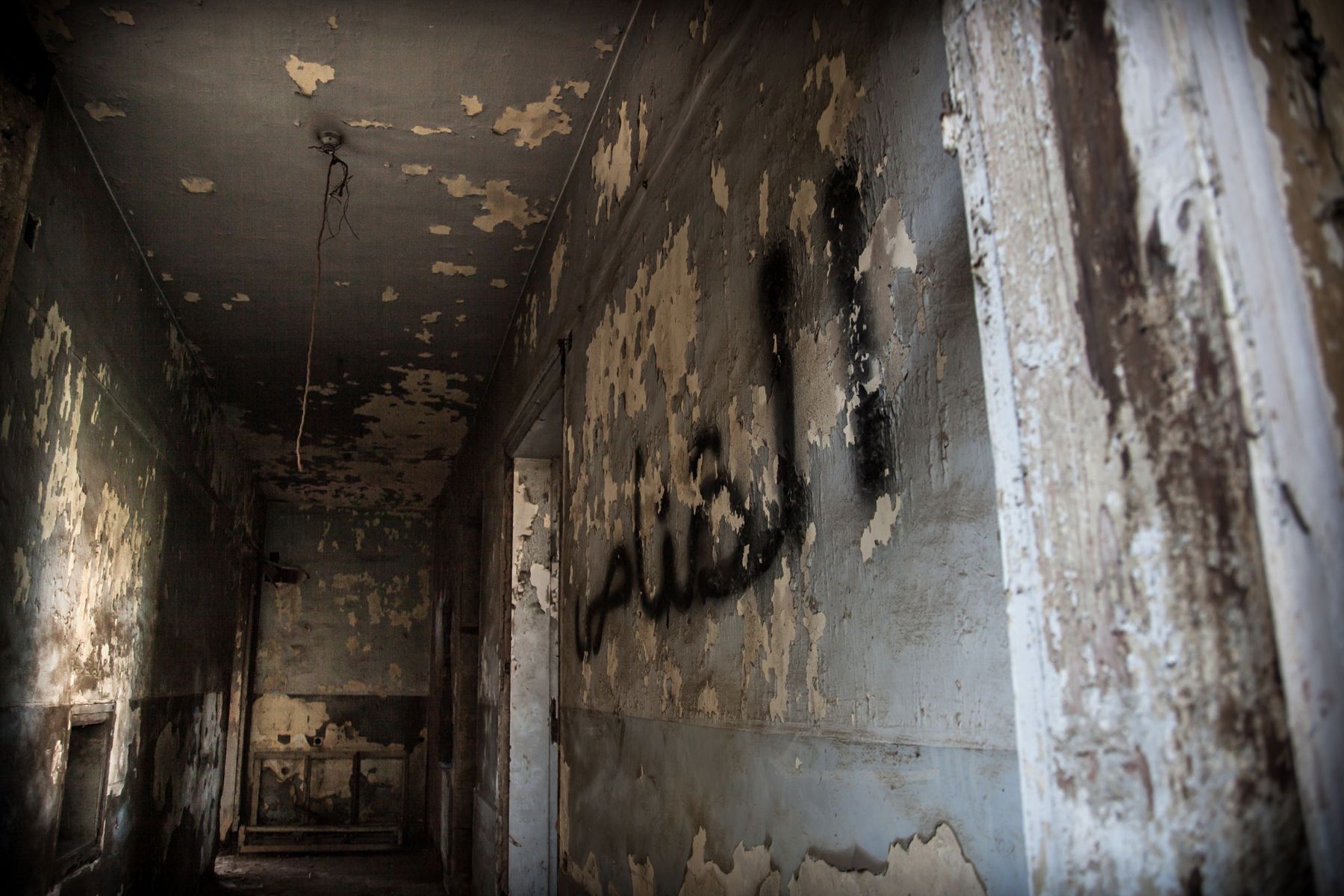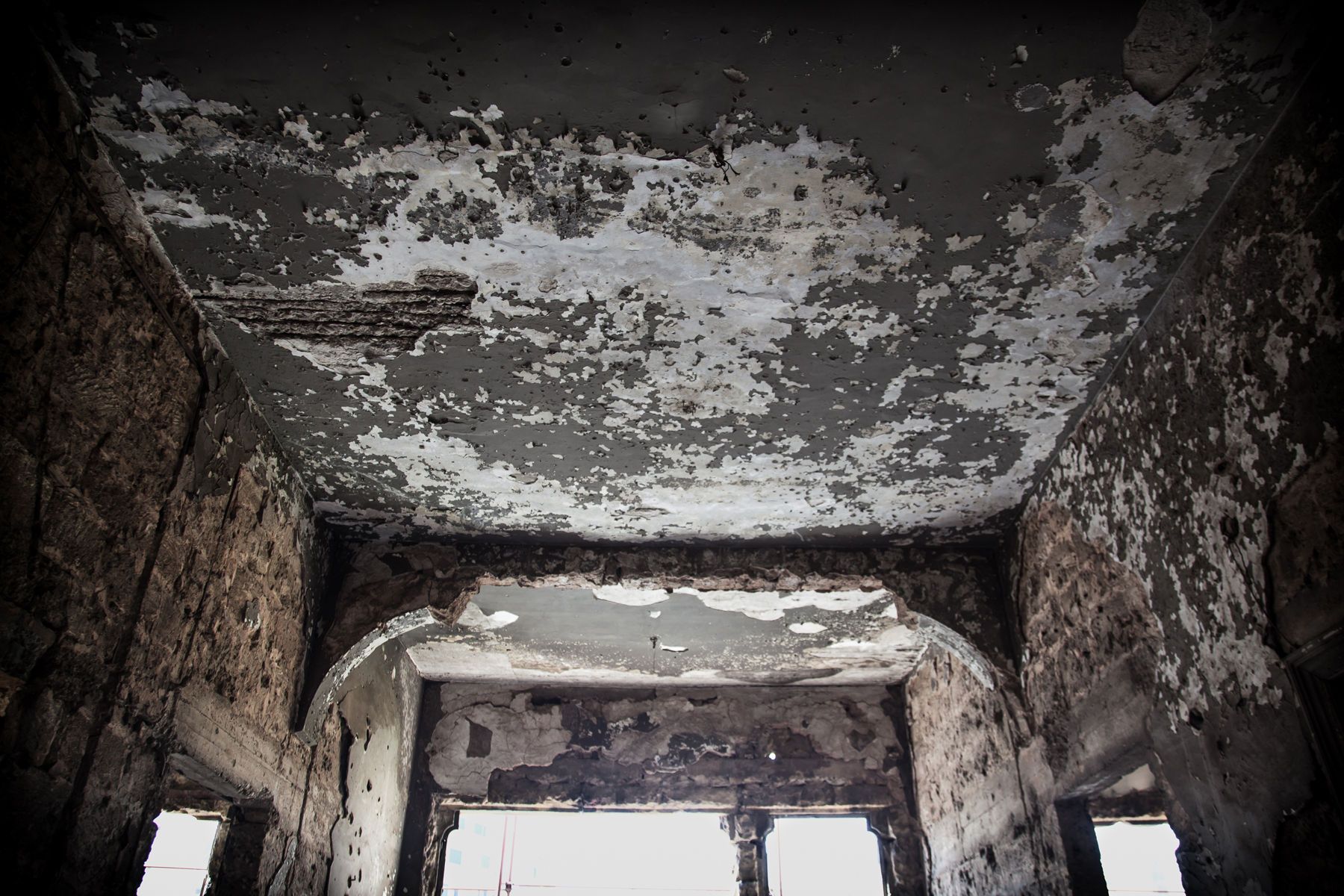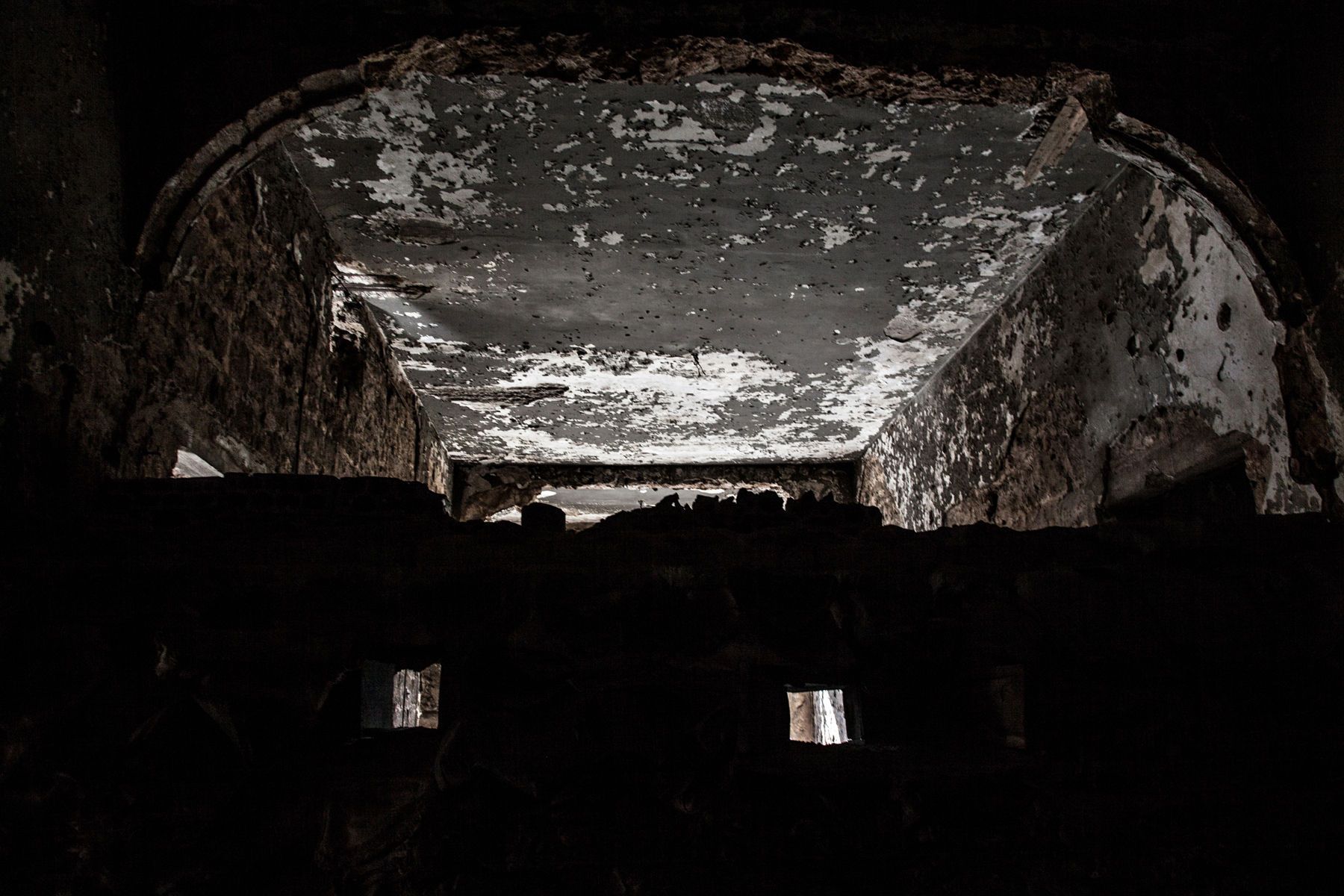Beit Beirut the Revival - Beirut, Lebanon - 2013
This is the most fascinating building in the memory of Beirut. It is iconic for its architecture, and its history of war. An architect called Aftimos built the first two floors in 1924 using pure stone. Then in 1932, architect Fouad Kozah took over and continued the second two floors using concrete. A rich Lebanese family, the Barakats, owned it later calling it “La Maison Jaune or “The Yellow House” and lived in its see-through the sky architecture. It was once a model of innovative design. The new Art Deco architect was unaware that his design was a space soon to be a tactical war machine gun. In 1975, the Civil War began in Beirut, and unfortunately, this building’s geographic location was on the demarcation line or the Green Line, as we used to call it. It’s the separation point between the West Beirut and East Beirut, between Muslims and Christians. Its strategic structure came to be a favorite sniper’s nest during the 1975-1990 Civil War.
This building was commanded by the militias of the East Side in order to control this entrance to Beirut. Here, on Damascus road, there was nothing except dust and signs that’s say “beware snipers”. The snipers that lived in this building found architecture with ready-made visual axes that helped them hide in the back rooms while shooting in he front. The snipers certainly knew hot to protect themselves, by building thick walls of 1.8 meters deep. Camouflaged behind these wooden doors, it was impossible to spot them from the outside, while they could see everything from the inside. They could target their opponents through seven transversal openings of the building. Shooting diagonally. We can still see outside these back rooms, the walls filled with shrapnel holes, while remaining intact from the inside for the whole 15 years. The snipers were safe.
While walking through this space, we can notice writings on these walls. These snipers left traces of their feelings, their fear, their envy and their love stories. These writings say, “I want to tell the truth, my soul flew away in a minute”, signed by Begin. “If my love for Gilbert is a crime let history witness I am a dangerous criminal” signed Tarazan and Katol. “Katol passed through here and with Gilbert I shall die”. These are the dashes of people who were human after all, and they survived by defending themselves.
This overlap between a genius architect and very clever snipers give this building its importance in the history of Lebanon. In a struggle to preserve this post-war heritage, those are scars the Lebanese people do not wish to forget, but learn form them so that history would not repeat itself, hopefully through this building’s story.
Beit Beirut is a landmark of the Lebanese Civil War protected by the municipality of Beirut in partnership with the municipality of Paris, it is being preserved to be a museum of memory, a cultural and artistic meeting place as a symbol of a reunited Lebanon.





























